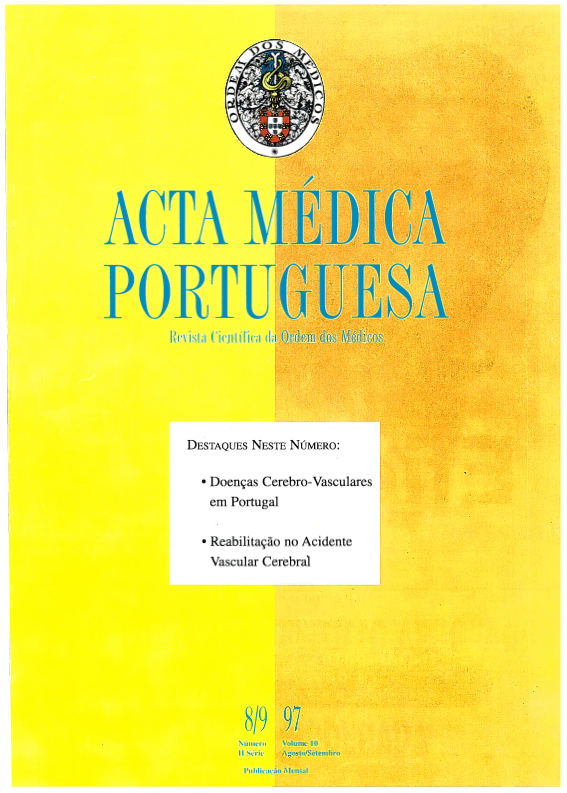Cerebrovascular diseases in Portugal: some epidemiological aspects.
DOI:
https://doi.org/10.20344/amp.2467Abstract
The Portuguese population is affected by the highest mortality rates in all the countries of the European Union. The highest mortality rates occur in some districts on the north coast where, in 1995, the rates standardised by age were above 200/100,000/annum, with the lowest figures in some districts in the interior and in Lisbon. These mortality rates have had a downward trend, but inferior to what is desired, or what occurs in other developed countries. The Autonomous Region of Madeira had a more significant percentage reduction (40%), followed by the Autonomous Region of the Azores (25%). Little is known of the effects of sporadic occurrences on the mortality associated to cerebrovascular disease. The consequences of two of these occurrences are described: the heat wave in June 1981 and the influenza epidemic in 1988-89. The number of deaths due to cerebrovascular diseases in the period corresponding to the heat wave was 2.2 times higher than expected, while during the influenza epidemic cerebrovascular diseases were the most common cause of death (25.8%) contributing to excess mortality. It is imperative that instruments be created to more accurately estimate the importance of this group of diseases in Portugal in what concerns incidence, resulting disability and health care requirements as well as social and financial costs for the individuals, the families and the community.Downloads
Downloads
How to Cite
Issue
Section
License
All the articles published in the AMP are open access and comply with the requirements of funding agencies or academic institutions. The AMP is governed by the terms of the Creative Commons ‘Attribution – Non-Commercial Use - (CC-BY-NC)’ license, regarding the use by third parties.
It is the author’s responsibility to obtain approval for the reproduction of figures, tables, etc. from other publications.
Upon acceptance of an article for publication, the authors will be asked to complete the ICMJE “Copyright Liability and Copyright Sharing Statement “(http://www.actamedicaportuguesa.com/info/AMP-NormasPublicacao.pdf) and the “Declaration of Potential Conflicts of Interest” (http:// www.icmje.org/conflicts-of-interest). An e-mail will be sent to the corresponding author to acknowledge receipt of the manuscript.
After publication, the authors are authorised to make their articles available in repositories of their institutions of origin, as long as they always mention where they were published and according to the Creative Commons license.









